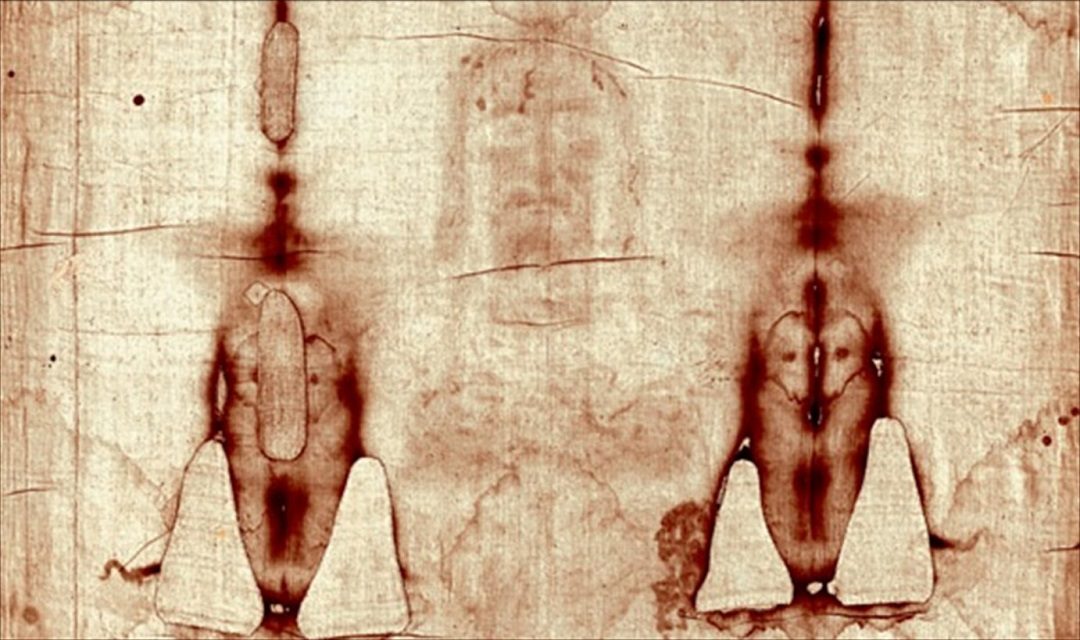This article first appeared in the Viewpoint column of the Christian Research Journal, volume 27, number 5 (2004). For further information about to the Christian Research Journal, click here.
“Is that new James bone box authentic?” “What do you think of the shroud of Turin?” “Did you know that they found chariot wheels from the exodus?” Almost every semester, students ask me questions like these. The archaeological finds they mention often are not recent discoveries or are not even ancient; nevertheless, they sometimes think such finds “prove the Bible” or offer decisive confirmation of some important Christian doctrine. On the other hand, I have also encountered Christians who believe archaeology offers little or nothing of value since they think Christianity should be based on faith, and not rocks, inscriptions, or artifacts. Finally, there are those, primarily in academic circles, who react with intense skepticism toward any sensational find that might affirm biblical information; fraud or duplicity is assumed until authenticity is proven.
There are some valid reasons for these reactions; however, a more balanced, thoughtful, and informed Christian position is possible. Christians are admonished to “make a right judgment” (John 7:24 NIV), to “test everything” and “hold on to the good” (1 Thess. 5:21 NIV), and to “be prepared to give an answer…for the hope” we have (1 Pet. 3:15 NIV). When we apply these precepts to biblical archaeology, they challenge us to examine, not ignore, finds that illuminate the biblical accounts. In so doing, the historicity of the Bible will be confirmed, for archaeology will show that the biblical accounts were placed in their proper historical, social, geographical, and chronological settings.
Before I discuss specific archaeological artifacts, however, it might be helpful to review the nature of archaeological evidence. There are occasional spectacular finds; however, most excavated materials are quite mundane. What is usually found is the “durable rubbish” of antiquity, such as broken pieces of pottery. Such ancient trash can help us understand more about life in the Near East, but it says little specifically about the Bible.
It is also important to realize that archaeological evidence is extremely fragmentary. Many major biblical sites have been partially excavated; however, the majority of ancient sites in the Near East (more than 90 percent) have never been excavated. Sites, moreover, are never completely excavated for several reasons. Excavators may lack time and resources, or modern buildings may cover an ancient site. More importantly, because excavation is destructive, excavators dig out only small parts of any ancient site so that possible future excavations will have undisturbed areas to examine. Finally, only a fraction of the finds ever appear in publications. Without adequate publication, much of what might be learned from a find is just as lost as if the excavation had never occurred. The relatively few objects or sites that have become generally known are only a tiny fraction of the total archaeological record. This means that arguments against the accuracy of Scripture based on a lack of archaeological confirmation (i.e., arguments from silence) are particularly weak. Numerous negative theories about biblical accounts once widely believed have been modified or discarded in the last 150 years or so as more discoveries have been made — and far more are still “out there”!
The above discussion relates primarily to artifacts and sites unearthed by professional excavations. Many objects now known from the area of the biblical world were not found in such controlled excavations. Indeed, much of the recent controversy about the James ossuary (bone box) comes because it was not found in an official excavation. Some unknown person or persons found the bone box and passed it on or sold it to others until Oded Golan, an antiquities dealer in Jerusalem, finally purchased it in the 1970s. Ossuaries are known to have been used in and around Jerusalem from c. 20 BC to c. AD 70, but beyond that, little is known of the original setting or discovery of this potentially significant find. The box, nevertheless, provides some clues about its origin, but it is exactly those clues — the shape and style of the Aramaic lettering, which translated says “James son of Joseph, brother of Jesus,” and the patina (coating) on those letters — that are currently in dispute. If a careful excavation team had discovered the ossuary in its original setting, there would be far less question about its authenticity.
The “official” verdict on the ossuary by the Israel Antiquities Authority (IAA) is that the inscription is a recent forgery. This conclusion was based primarily on chemical tests of the patina. Other less objective but still potentially damaging stories have also surfaced. Duke University professor Eric Meyers has reported that two scholars say they saw the James ossuary in Golan’s shop in the mid-1990s, but it did not then include the decisive “brother of Jesus” phrase.1 (Hershal Shanks, editor of Biblical Archaeology Review, identified one of the scholars as Joe Zias.2) If so, a modern forgery added that part of the inscription presumably to increase the value of the box.
Several scholars, however, have questioned the IAA finding and have called for more tests. Shanks, among others, points out that the IAA team included two epigraphers (experts in writing) who did not think that the inscription was fake until after they heard that the patina tests showed modern influence. In other words, if the inscription was a modern forgery, it was not clearly detectable to experts by the lettering alone. Shanks defends the authenticity of the inscription by noting inconsistencies in the writings of Zias and the IAA epigraphers and in the patina tests. He implies that modern cleaning of the inscription, not recent forgery, may be the cause of the chemical anomalies in the patina.3 Unfortunately, at the time of the writing of this article, an informed conclusion regarding the authenticity of the James ossuary inscription is not possible.
It is exactly at such times, however, when the scholarly “jury is out,” that many Christians are tempted to jump to conclusions without considering the consequences. If more information should prove conclusively that the James ossuary inscription is false, apologetic or doctrinal arguments touting the newly uncovered “physical evidence” of the existence of Jesus and His brother James will seem quite foolish. On the other hand, if the ossuary inscription proves to be authentic, there will be plenty of time to draw appropriate conclusions from that fact. A wealth of archaeological and historical information, meanwhile, is already available to prove the existence of Jesus, James, and dozens of other persons, places, and sites mentioned in the Bible. Christians need only to read and study beyond the sensational headlines.
Of course, sometimes the “jury is out” on artifacts for decades. That seems to be the case with another spectacular find, the shroud of Turin. This cloth burial covering of a badly beaten or crucified man has been controversial since at least 1898 when an Italian photographer noticed that a photo negative of the shroud showed the positive image of a man many believe was Jesus. The “official” verdict on the shroud seemed to come in the late 1980s when radiocarbon dating of the cloth material yielded a date between AD 1260 and 1390 — ruling out any direct link with the death or resurrection of Jesus. Those who hold to the authenticity of the shroud, however, note that there is still no adequate explanation of how the image was produced. They argue that the samples used in the radiocarbon dating were contaminated in various ways. Christians should certainly stay informed about the shroud of Turin and the James ossuary, but should not use either in apologetic or doctrinal debates. Abundant solid archaeological evidence is available elsewhere.
This short article unfortunately cannot cover even a “top 10” of recent, undisputed finds. Perhaps a survey of key areas where archaeology has been particularly helpful will stimulate thoughtful Christians to learn more on their own. First, thousands of manuscripts of the New Testament and dozens of the Old Testament have come to light in the last 150 years or so. I believe that these manuscripts make possible the reconstruction of an accurate Scriptural text — one that is substantially the same as the one the human authors originally wrote. Reliable dating of these manuscripts also establishes that the latest possible date for the original composition of many Bible books is earlier than what critics once thought possible. For example, some scholars once theorized that the gospel of John was written in the early to mid second century AD, but after a small fragment of John that dated to c. AD 125 was discovered in Egypt in the early twentieth century, that theory became obsolete. Similarly, two small silver amulets (scrolls) excavated near Jerusalem in 1979, which contained a copy of part of Numbers 6:24–26, were dated to the seventh century BC. The discovery and early date of this text makes a critical date of c. 530 BC for the composition of this section of Numbers far less credible.
Second, archaeology helps demonstrate that the places and people mentioned in the Bible existed when and where the Bible says they did. For example, inscriptions have confirmed the existence of Pontius Pilate, the high priest Caiaphas, and several other people mentioned in the New Testament. Numerous significant texts and artifacts could also be cited for the Old Testament. An inscription found in 1993 in northern Israel at Tell-Dan and dated to c. 800 BC, for example, now provides the earliest extrabiblical confirmation for the existence of “the house of David,” that is, King David and his ruling dynasty. There is, moreover, no serious dispute about the authenticity or date of any of these archaeological finds (e.g., the fragment of John, the silver amulets, the Pilate inscription). There is no need to defend Christianity or the Bible with questionable or potentially fraudulent artifacts when considerable solid finds are available.
On the other hand, archaeology has limitations. In many cases, historical sources outside the Bible can verify the existence and key elements in the lives of individuals mentioned in the Bible far better than the best inscription or artifact. More importantly, perhaps, even if a find could show that a biblical event did happen, archaeology could never explain the theological significance of that event. In that regard, archaeology can never “prove the Bible.”
— Daniel L. Hoffman
NOTES
- Eric Meyers, “Well-Known Israeli Archaeologist Casts More Doubt on Authenticity of James Ossuary,” Bible and Interpretation, January 2004, http://www.bibleinterp. com/articles/Meyers_More_Doubt.htm.
- Hershel Shanks, “Lying Scholars?” Biblical Archaeology Review, May–June 2004, 48–52, 61–62.
- Ibid.










